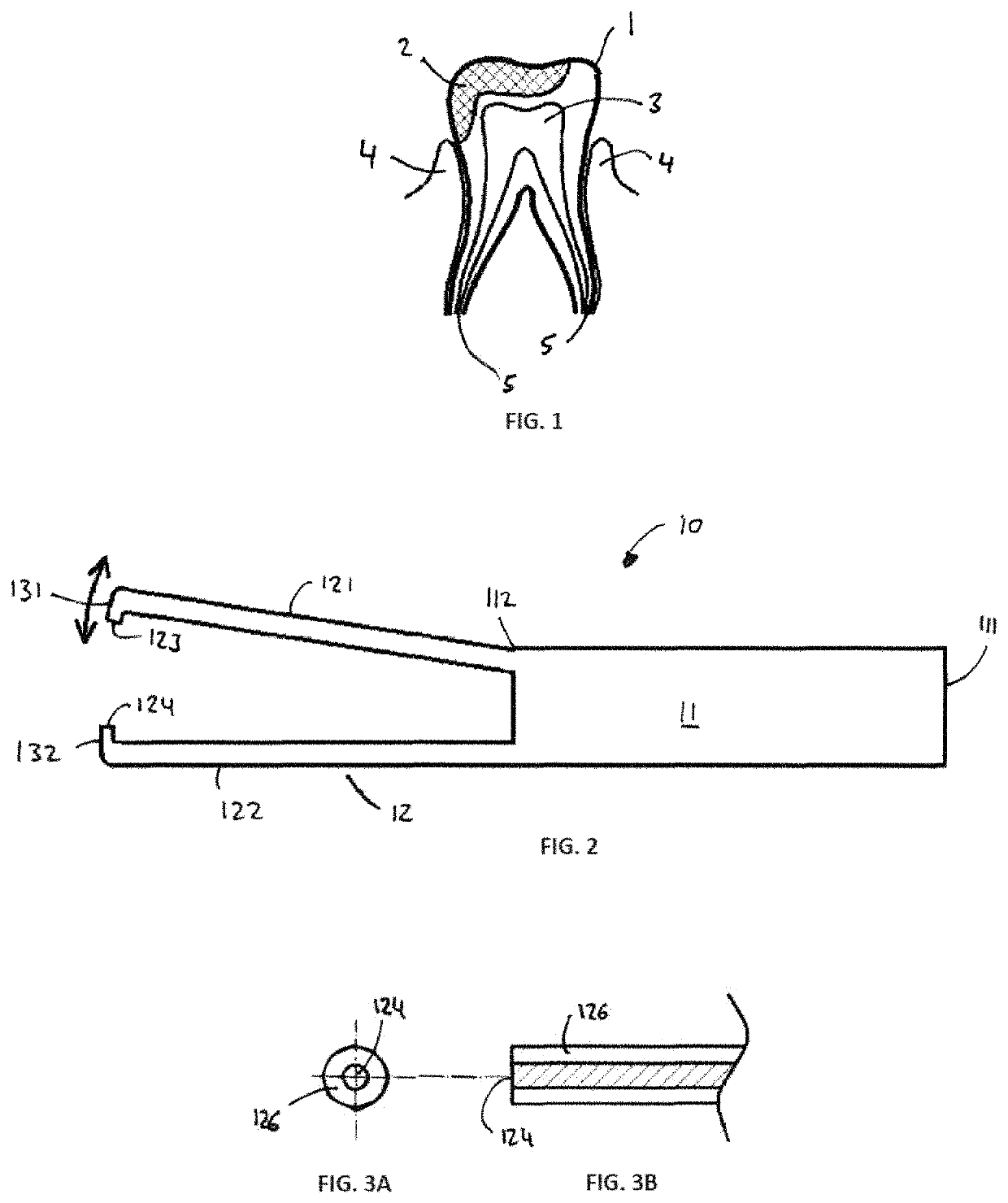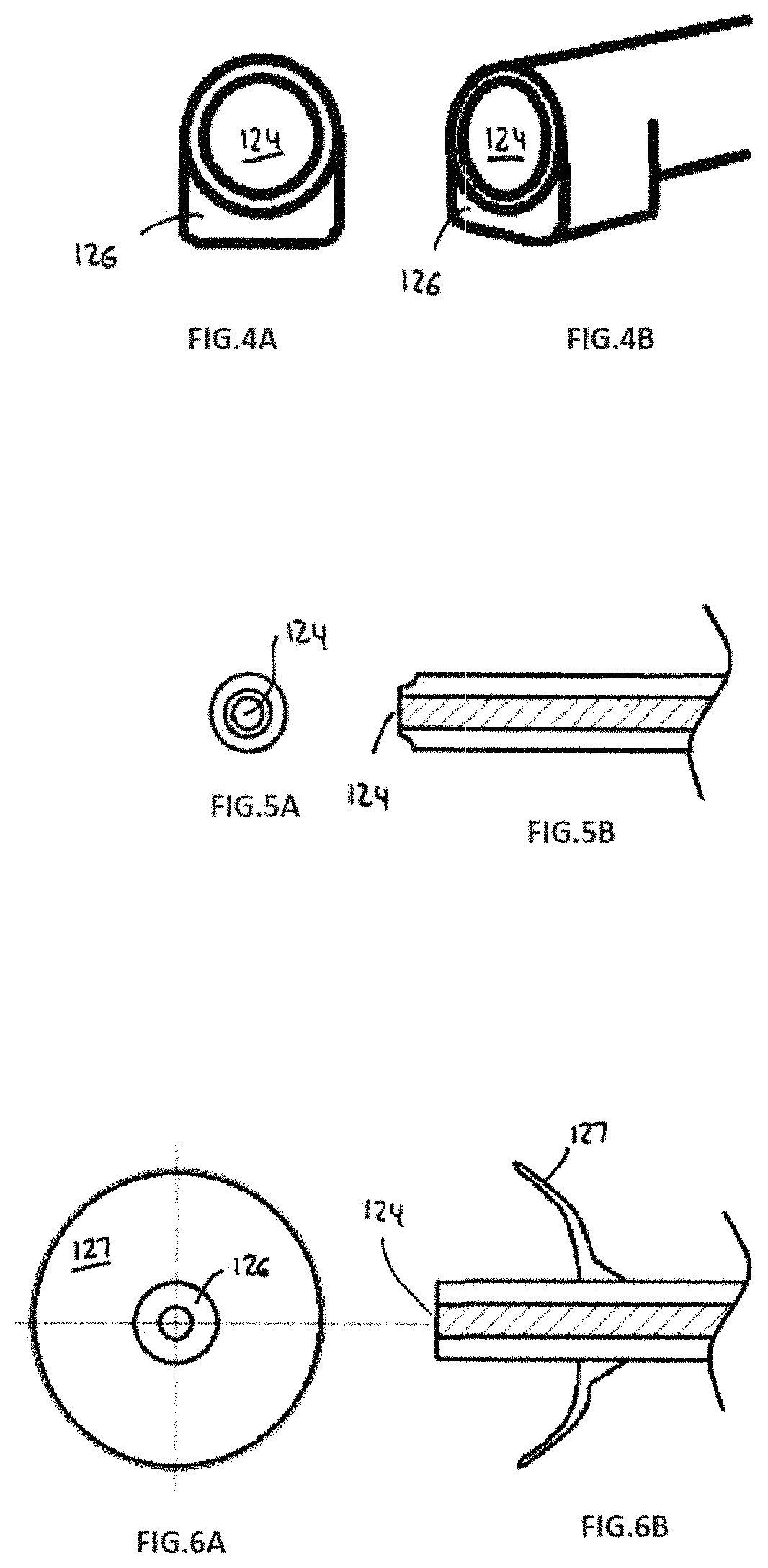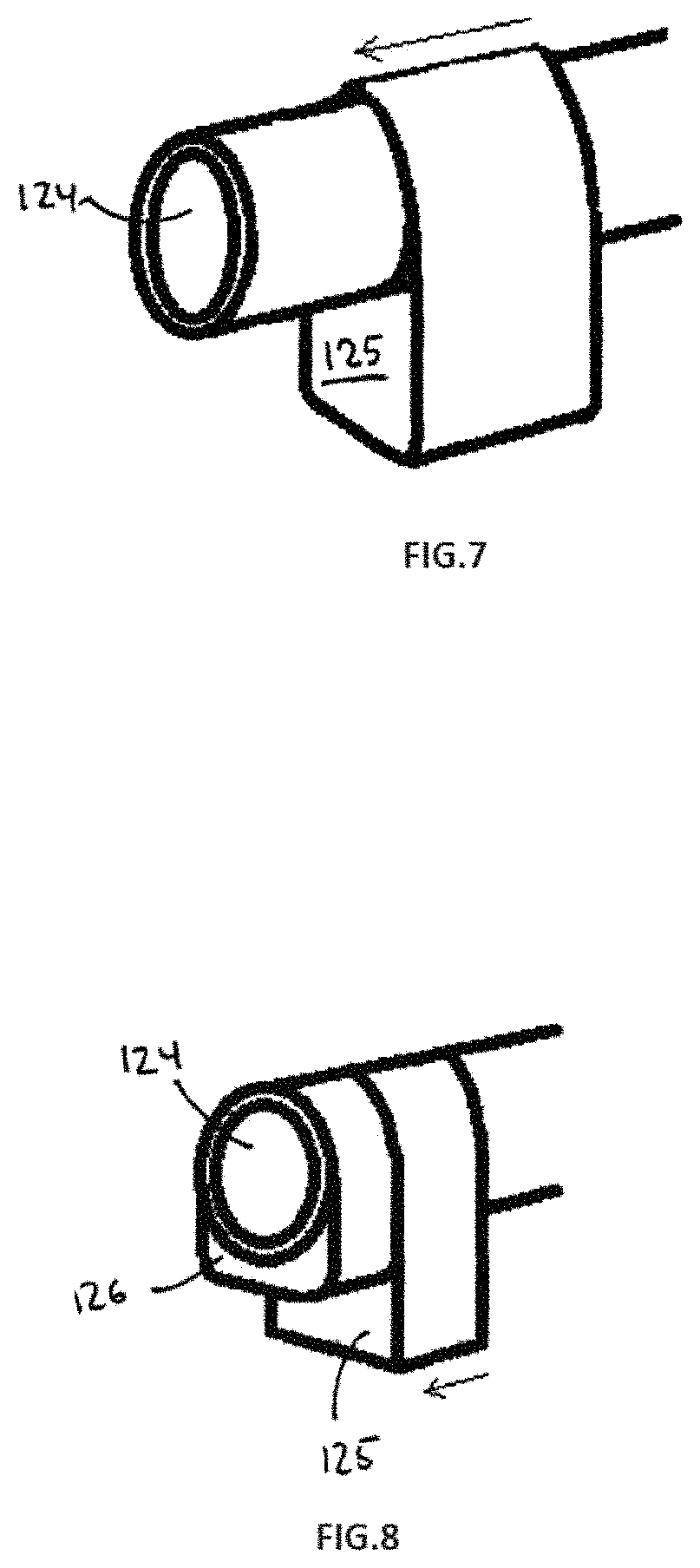Dental probe
a technology of optical probes and probes, applied in the field of optical tooth characterization, can solve the problems of only being effective, restorations such as fillings, crowns or bridges, cannot be transparent to light of wavelengths of interest, and restorations pose significant problems for any measurement using electromagnetic radiation, so as to improve the signal-to-noise ratio, improve the sensitivity and specificity of the method, and reduce the diameter of the receiver and the emitter.
- Summary
- Abstract
- Description
- Claims
- Application Information
AI Technical Summary
Benefits of technology
Problems solved by technology
Method used
Image
Examples
first embodiment
[0052]The present invention provides a dental probe for determining the vitality of a tooth, in particular a tooth previously having been restored by a filling, crown or bridge. The dental probe is adapted to be used in the mouth of the patient. Specifically, the dental probe is adapted to be positioned consecutively on every tooth in the buccal / oral cavity. Given the orientation of the teeth in each of the four dental quadrants, the design of the dental probe, in particular the design of the emitter surface and the receiving surface preferably has symmetry properties. a mirror plane is present between the emitter surface and the receiving surface. According to a further embodiment, a first mirror plane is present between the emitter surface and the receiving surface and a second mirror plane perpendicular to the first mirror plane is furthermore present, whereby the emitter surface and the receiving surface have two-fold symmetry.
[0053]Moreover, the dental probe is adapted to be s...
second embodiment
[0109]FIGS. 4A and 4B shows a partial view of a dental probe according to the present invention, which includes a light receiving surface 124 and a light shielding spacer member 126 adjacent to the optical path for establishing and maintaining a distance between the gum line and the optical path at the receiver surface 124.
[0110]FIG. 4A shows a front view of the receiver surface 124 and spacer member 126. The diameter of the circular receiver surface 124 is at most 1200 μm. The receiver surface is at the distal end of a light guide. Accordingly, the receiver surface may be easily placed on the surface of a tooth. In order to keep a defined distance between the gum line and the receiver surface and in order to shield the receiver surface from scatter light from the gingiva, a spacer member 126 is provided.
[0111]FIG. 4B shows a perspective view of the receiver surface 124 and spacer member 126 shown in FIG. 4A. As shown, the front surface of the spacer member and the receiver surface ...
third embodiment
[0112]FIGS. 5A and 5B shows a partial view of a dental probe according to the present invention, which includes a light receiving surface and a pressing member for engaging the gingiva by applying pressure onto the gum when the receiver surface is positioned on the tooth, thereby providing an anaemic condition of the gingvia. The pressing member and the light shielding spacer member are integral parts of a combination member adjacent to the optical path for establishing and maintaining a distance between the gum line and the optical path at the receiver surface.
[0113]FIG. 5A shows a front view of the receiver surface 124 and spacer member 126. The diameter of the circular receiver surface 124 is at most 1200 μm. The receiver surface is at the distal end of a light guide. Accordingly, the receiver surface may be easily placed on the surface of a tooth. In order to keep a defined distance between the gum line and the receiver surface and in order to shield the receiver surface from sc...
PUM
| Property | Measurement | Unit |
|---|---|---|
| distance | aaaaa | aaaaa |
| apical-coronal diameter | aaaaa | aaaaa |
| diameter | aaaaa | aaaaa |
Abstract
Description
Claims
Application Information
 Login to View More
Login to View More - R&D
- Intellectual Property
- Life Sciences
- Materials
- Tech Scout
- Unparalleled Data Quality
- Higher Quality Content
- 60% Fewer Hallucinations
Browse by: Latest US Patents, China's latest patents, Technical Efficacy Thesaurus, Application Domain, Technology Topic, Popular Technical Reports.
© 2025 PatSnap. All rights reserved.Legal|Privacy policy|Modern Slavery Act Transparency Statement|Sitemap|About US| Contact US: help@patsnap.com



